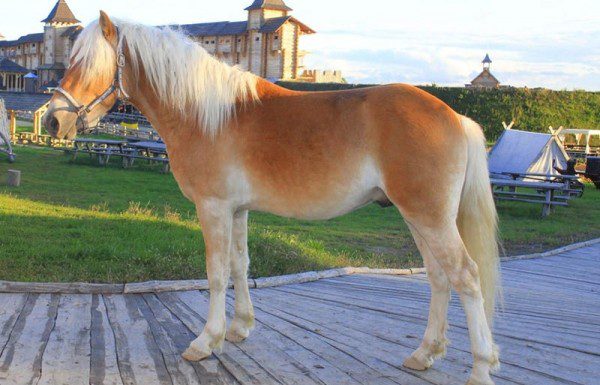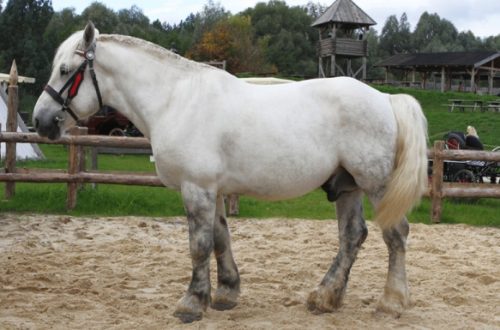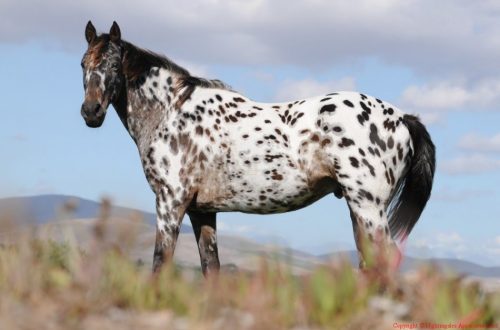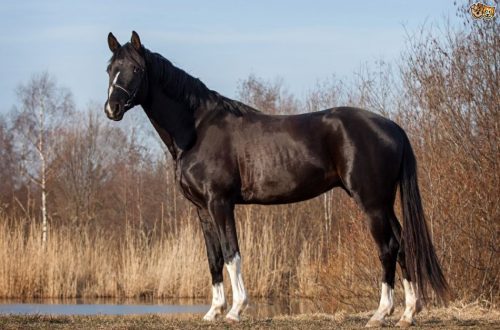
tukang ngibul

Sajarah jenis
Haflinger is an old breed of low horses, bred in the mountains of Austria, in Tyrol. The history of the Haflinger can be traced back to the Middle Ages, when writers mentioned a population of Oriental type horses living in the mountains of South Tyrol in what is now Austria and northern Italy. Many villages and farms in the Tyrol could only be reached by narrow mountain paths, moving and carrying loads that only nimble and agile horses could do. Paintings from the area in the early 19th century depicted small neat horses with riders and packs traveling up steep mountain roads.
The first official documentation representing the Haflinger (named after the Tyrolean village of Hafling, present-day Italy) was provided in 1874, when the founding stallion, 133 Foley, was born from a crossbred Arab 249 El Bedawi XX and a local Tyrolean mare.
During the Second World War, there were significant changes in the established order of breeding, as the army needed pack horses, and the selection of Haflingers was carried out to obtain shortened massive animals. After the war, the growth and elegance of the breed were restored, with emphasis on breeding a small horse, versatile riding and harness, strong constitution, strong constitution with strong bones.
Fitur Eksterior
Haflingers are easily recognizable. The golden color with a white mane and tail has become their hallmark.
The height at the withers is 138-150 cm. The head is noble and harmonious, the stallions are allowed a slight roughness, the back of the head is well defined, the neck is noble, of sufficient length, correctly set, the chest is fairly wide, deep, the shoulder has an excellent angle, the withers are high, ensuring a good position of the saddle, the back is strong, of sufficient length, with a short loin, the legs are dry, correctly set, the joints are wide and well defined, the hoof horn is strong, marks on the legs are not desirable, but allowed.
Color: playful with a linen mane and tail.
The Haflinger has a studious, rhythmic and ground-covering gait. The step is relaxed, energetic, stately and rhythmic. The trot and canter are elastic, energetic, athletic and rhythmic. The hind legs work actively with a large grasp of space. Horses of this breed are characterized by a low move, a high move is undesirable.
Aplikasi lan prestasi
The Haflinger is the perfect horse for the whole family. This is a horse for sport and farming. They are unpretentious and hardy, in some reference books they appear as “Alpine Tractors”, where they are regularly used in the work of small farms. Their amazing resilience and perfect mentality have made them the backbone of the Austrian cavalry, where more than 100 Haflingers serve the mountain military units every day.
The uniqueness of the Haflinger lies, of course, in his love for people. A diligent and unforgiving character developed in him over the centuries in the process of living side by side and working with mountain peasants, serving all the goals of family members. Haflinger easily becomes a member of the family.
The modern Haflinger is distributed throughout the world, used for such purposes as heavy-duty, light-harness, show jumping, dressage; performs in races, driving, vaulting, western style, is used as a pleasure horse, and is also widely used in hippotherapy. The Haflinger holds its own with other breeds in competition, often showing surprising athleticism and strength for its size.





